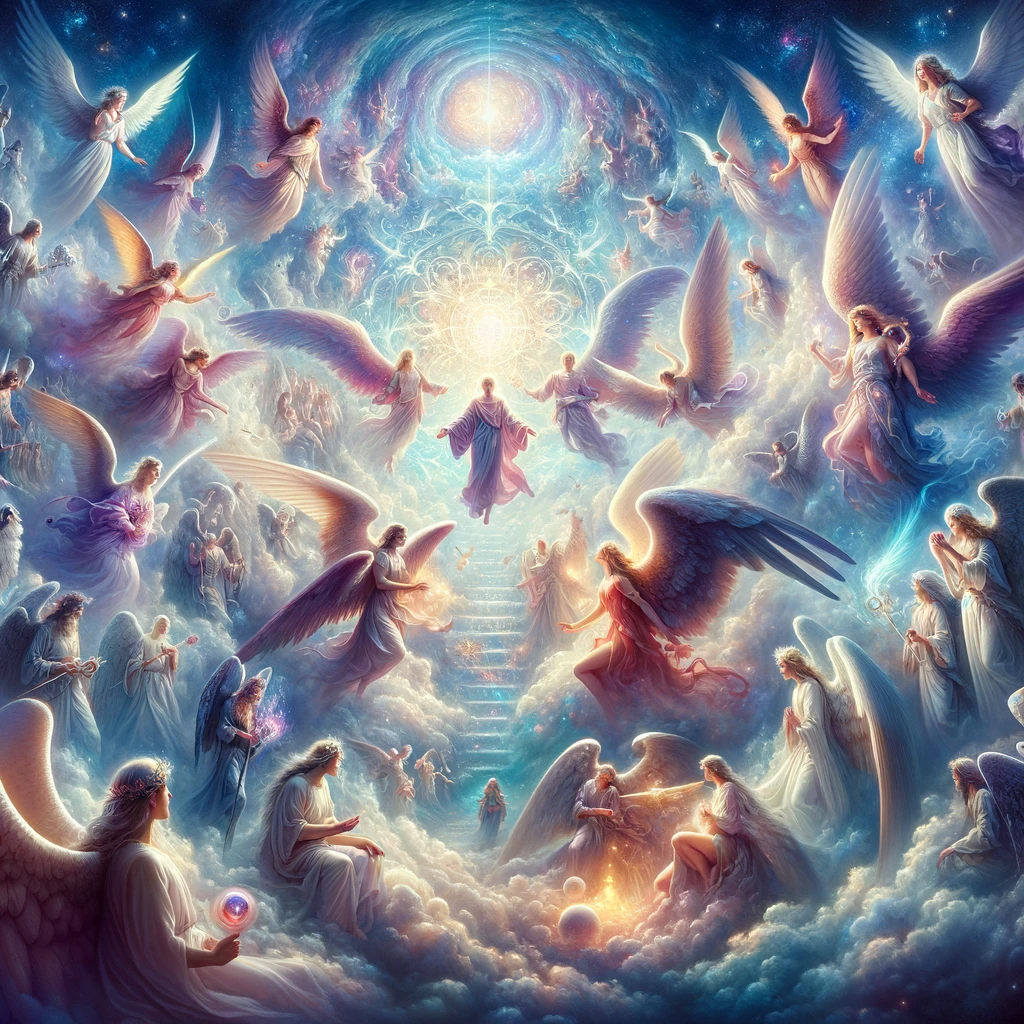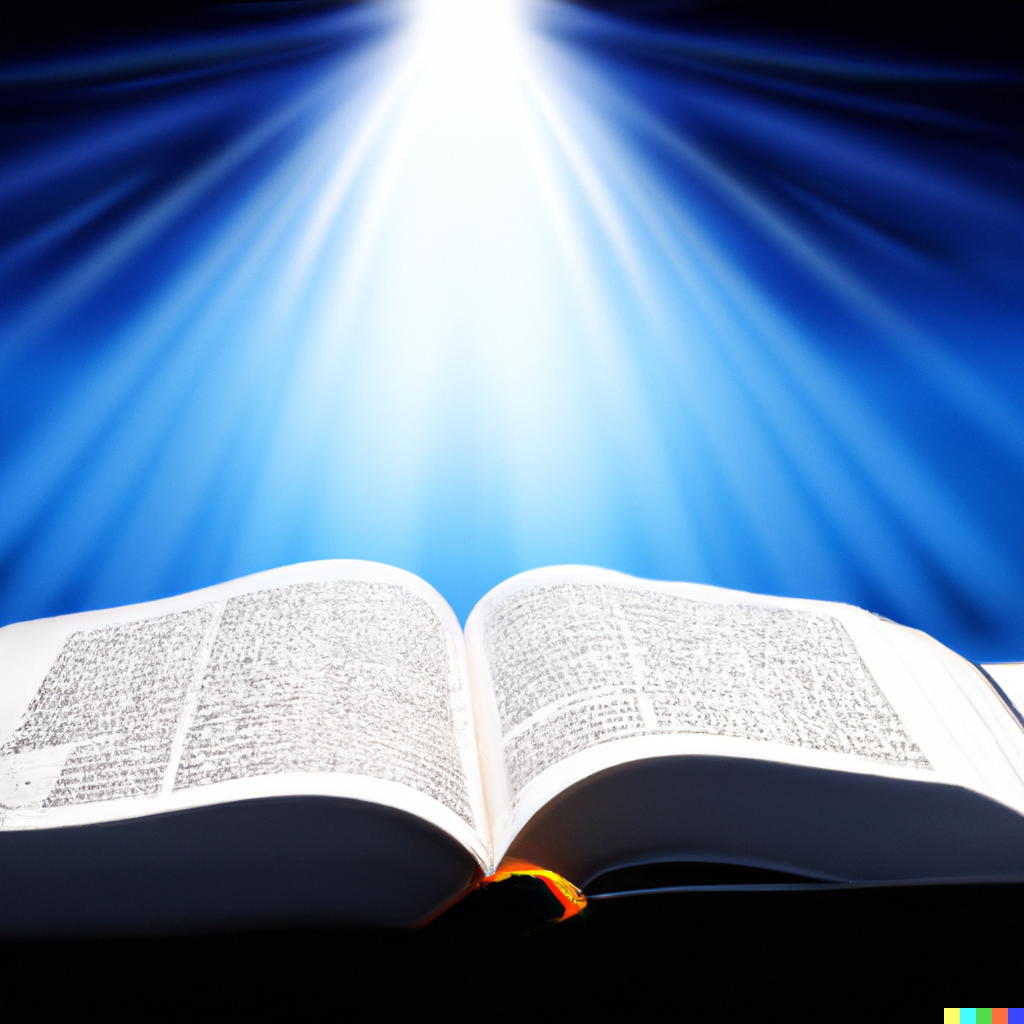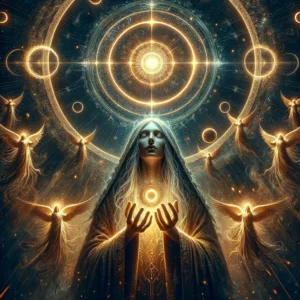
Angelology
Step into the enchanting world of Eastern Orthodox theology, where angelology takes center stage.... View more
Thrones
-
Thrones
Thrones: Bearers of Divine Justice and Authority Serve as the symbols of God’s justice and authority, often depicted with imagery of glowing rings or light rays.
“Jewish beliefs about the functioning of angels originated in two threads: the unique ancient Egyptian institution of the king as the divine son of god (which includes solar worship), and the concept of the Divine Council, in which the supreme God is the king of the gods. The method of investigation involved a close reading, combined with a History of Religions methodology, of texts displaying marked angelological content. Certain motifs, especially “throne” and “sun/fire,” which were identified as characteristic of angelic functioning, were compared across a broad spectrum of texts. In this way the diachronic development of major angelological motifs as well as the synchronic connections (in terms of angelological motifs) between the respective cultural contexts became apparent. The intellectual abstractions of Hellenism effected the transition to the reception of the concept of Christianity within a monotheistic framework.” (1)
“In Col 1:16 ‘thrones’ form one of the classes of angels—the term occurs only here in the NT—but in systems of angelology ‘thrones’ belong to the highest grade. These angels may be so called as sitting on thrones round the throne of God, the imagery expressing their conspicuous and serene dignity (so Origen, Lightfoot, Meyer, Abbott, etc.). Clement of Alexandria thought that they were so called because they form or support the throne of God, like the cherubim (Ezk 10:1, 11:22, Ps 99:1), with which several of the Fathers identified them (Gregory of Nyssa, Chrysostom, Theodoret, Augustine)” (2)
“Similarities between 1 Enoch 71 and 2 Enoch 22 in the depictions of Kavod and Enoch’s transformation near the Throne of Glory are also apparent: a. In both accounts (1 En. 71.3–5 and 2 En. 22.6), Enoch is brought to the Throne by archangel Michael. b. Angelology of the Throne in 1 Enoch, similar to 2 Enoch and the Ladder, include three classes of angelic beings: Ophanim, Cherubim and Seraphim. c. Both Enochic accounts speak about the transformation of the visionary. Enoch’s metamorphosis in 1 Enoch 71 recalls the description of the luminous transformation of Enoch into a glorious heavenly being from 2 En. 22.8–9. d. In both cases, the metamorphosis takes place in front of the fiery ‘structure’, a possible source of both transformations. e. Studies in the past have noted that in both accounts the transformation of the visionary takes place in the context of the angelic liturgy (2 En. 21.1–22.10; 1 En. 71.11–12). The same feature is also observable in Ladder 2.15–18. f. In both accounts Enoch falls on his face before the Throne. g. The manner in which Enoch is greeted near the Throne of Glory in 1 En. 71.14–17 evokes the scene from 2 En. 22.5–6, where the Lord personally greets Enoch. In both accounts we have an address in which the visionary is informed about his ‘eternal’ status.” (3)
“In later Jud. popular belief in angels greatly increased. It was not hindered by the rabbis, but was rejected by the Sadducees (cf. Acts 23:8). Provided that they were not regarded as independent and that no angel cult formed, belief in angels was generally considered to be an extension of OT piety. Angels represented Yahweh’s omniscience and omnipresence, formed his court and attendants, and were his messengers. They were linked with the stars, elements, natural phenomena, and powers, which they ruled as God’s representatives. The individual had a guardian angel, and national guardians were set over the peoples (cf. Michael over Israel, Dan 10:13, 21). The pseudepigraphic lit. makes ref. to as many as seven archangels who have personal names. Other groups of angels are described as “powers,” “thrones,” “lords,” etc. Angelology was highly developed in 1 Enoch (see chs. 6–16, 19–21).”(4)
Sources:(1) Sailer, William et al. Religious and Theological Abstracts. Myerstown, PA: Religious and Theological Abstracts, 2012. Print.(2) Dundas, W. H. “Throne.” Ed. James Hastings. Dictionary of the Apostolic Church (2 Vols.) 1916–1918: 577. Print.(3) Evans, Craig A. Of Scribes and Sages : Early Jewish Interpretation and Transmission of Scripture: Later Versions and Traditions. Vol. 50–51; 9–10. London: T & T Clark International, 2004.Print. Library of Second Temple Studies; Studies in Scripture in Early Judaism and Christianity.(4) Silva, Moisés, ed. New International Dictionary of New Testament Theology and Exegesis 2014: 121–122. Print.-
This discussion was modified 1 year, 3 months ago by
Justinian of Arizona.
-
This discussion was modified 1 year, 3 months ago by
Justinian of Arizona.
-
This discussion was modified 1 year, 3 months ago by
Justinian of Arizona.
-
This discussion was modified 1 year, 3 months ago by
Justinian of Arizona.
-
This discussion was modified 1 year, 3 months ago by
Justinian of Arizona.
-
This discussion was modified 1 year, 3 months ago by
Justinian of Arizona.
-
This discussion was modified 1 year, 3 months ago by
Log in to reply.


